Long queues near the top prolonged the wait times this year, causing oxygen tanks and physical endurance to drain on the way down.
The 'traffic jams' likely contributed to the death of 11 people including three Indians.
Ranjita Ganesan reports.
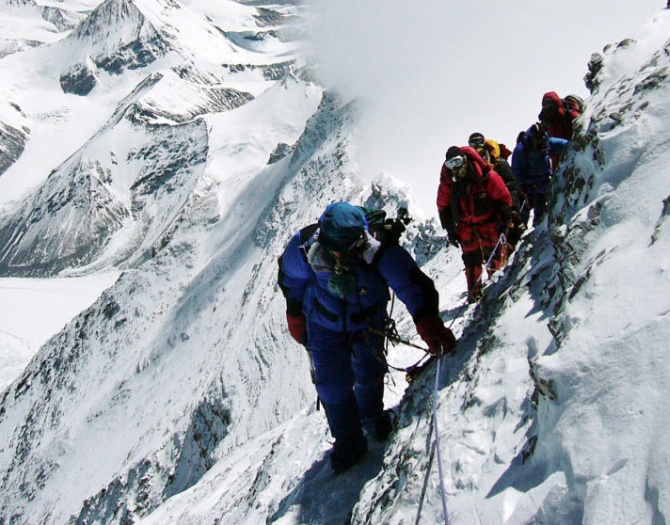
For Ameet Singh the allure of the highest peak in the world has fast faded in recent years.
"Everest only matters to you. Everest itself is indifferent to who you are, it does not care," says the Pune-based mountaineer and trainer, referring to the box-checking exercise it has become for thrill-seekers of late.
Some 77 Indians applied to climb the mountain this year, not all of them equally skilled or aware of what it takes to scale the 8,848 metre mountain.
The network of forces at work ostensibly makes it difficult to separate true mountaineers from tourists: The Nepal government is accused of issuing permits liberally to boost revenue, trekking companies do not insist on checking an applicant's track record, and local Sherpas who accompany every climber do much of the heavy-lifting.
"It is almost like 'glamping' now," says Singh.
He has no plans of conquering the Himalayan peak, instead finding his challenges in Vinson Massif, the highest peak in Antarctica, which he scaled in 2015, or the 6,543-metre Shivling in Uttarakhand whose top he reached alone in 2017.
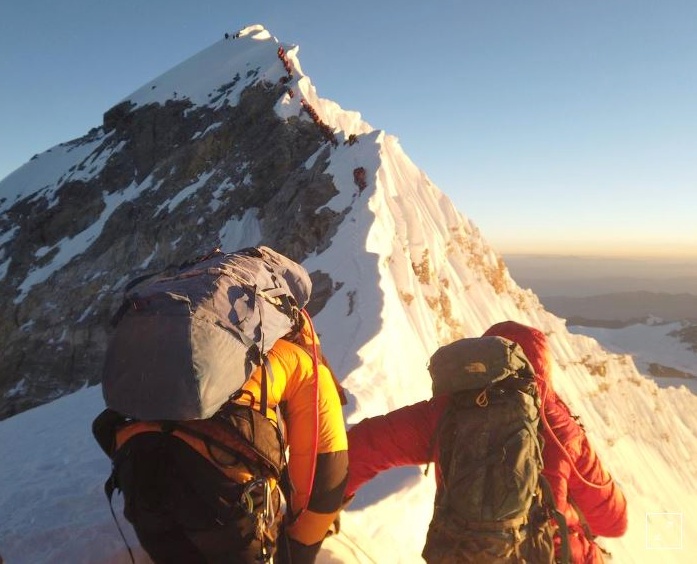
Several senior climbers have come to share his sentiment, viewing in particular the route from Nepal as a 'circus' or 'conga line'.
Norbu Tenzing Norgay, son of Tenzing Norgay who was the mountain's maiden summiteer in 1953 along with Edmund Hillary, labelled it 'Everest Inc' for its rapid commercialisation.
The Nepal government awarded 381 climbing permits this season. That figure doubles with the inclusion of support staff.
Climbers use a single fixed line to navigate treacherous stretches.
Long queues of aspiring summiteers near the top prolonged the wait times this year, causing oxygen tanks and physical endurance to drain on the way down.
The problem of 'traffic jams' was exacerbated this year by a shorter 'weather window' -- days when wild winds die down -- effectively May 15 through 16, and May 22 through 23.
It likely contributed to the death of 11 people including three Indian summiteers.
Two of Singh's friends from mountaineering circles in Maharashtra, Nihal Bagwan and Anjali Kulkarni, were among those who perished.
Besides the ultimate tragedy, there are routine yet less-reported injuries such as losing fingers and toes to frostbite.
A photo by Nirmal Purja, a Gurkha soldier of the British army special forces in Nepal who is aiming to climb 14 mountains in seven months, brought overcrowding to wider notice this season.
It showed many figures huddled together in colourful gear, like a string of Tibetan prayer flags, making their way up the white peak.
Karma Tenzing Sherpa, who runs the trekking firm Into the Himalayas, however, says his community has come to expect bottlenecks as the number of permits has been consistent for some years now.
He is concerned about the negative press the mountain has been receiving.
More than crowds, he believes the problem is crowd management, which can be solved by spreading the ascents more evenly over the days of good weather.
Tenzing Sherpa's team climbed in the first window in mid-May and found fewer people, while too many climbers waited for the second window hoping that the fixed rope and path would be optimal by then.
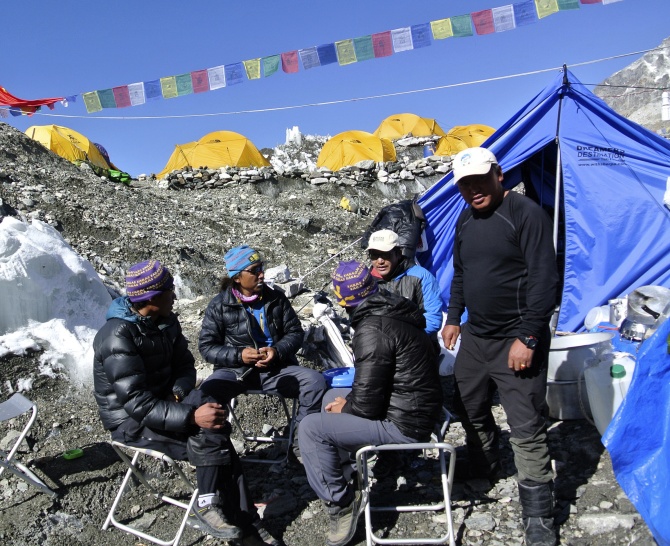
It is an expensive adventure too. Costs for climbing Everest range from a minimum of $30,000, going up to $130,000.
"There is very little review of a potential customer's experience and even when they have insufficient mountaineering experience, they are told their guide will teach them everything they need to know about how to climb Everest," says Colorado-based mountaineer and public speaker Alan Arnette in an e-mail.
Arnette has spent decades tracking developments on the Himalayan peak, and poses the question: If there are qualifiers for the Ironman Triathlon, then why not for summiting the world's highest mountain?
Some report that people who have never previously seen a crampon turn up for the climb too.
Indeed, some trekking firms in search of affluent clients advertise that for an added price they will take on the old and unfit too.
Occasionally, high-paying climbers opt for extravagances like hiring more than one sherpa per head to carry extra baggage and take photographs.
Several Nepali government officials, it is reported, have said the country is considering a rule that will require climbers to show proof of mountaineering experience and good health.
Everest is hardly a venue for luxury. Just above base camp is the particularly dangerous Khumbu Icefall, where an avalanche killed 16 people in 2014.
Above 8,000 metres is the sub-zero-temperature, oxygen-depleted 'Death Zone', so named because of the high risk of cerebral oedema at this altitude.
Most fatalities take place here and the death rate over two decades is about six a year.
While bodies are usually left behind, at times search parties have retrieved them from their icy graves, as in the case of Indian trekkers Goutam Ghosh and Paresh Nath in 2017 a year after they had died.
The well-adapted and acclimatised sherpas, who lay safety lines, often lose their lives too.
It is also not unusual to hallucinate in this zone; Hemant Gupta, a senior manager with the Tata Steel Adventure Foundation who scaled Everest in 2017, remembers imagining two 30 feet silhouettes climbing ahead of him that disappeared when he blinked.
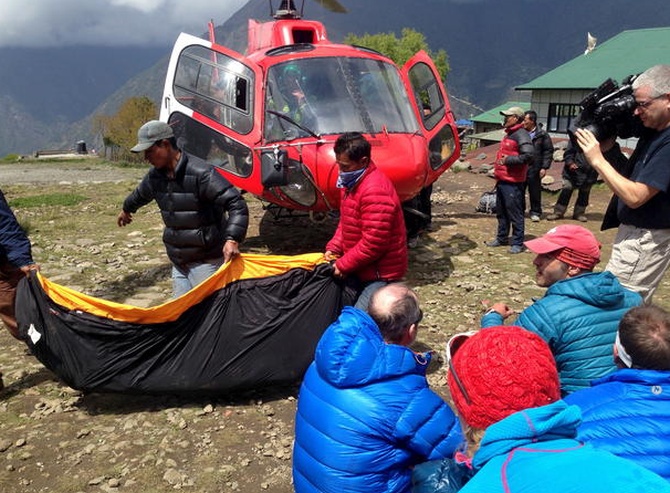
In Arnette's opinion, guides too should receive basic training in how to recognise and handle altitude sickness, and how to turn back a client when needed.
Then, there is the mountaineer's personal responsibility.
"Simply assuming a sherpa or any other type of guide can save your life once you get into serious trouble is a huge mistake. Sherpas are strong but cannot save everyone."
Seasoned Indian mountaineers agree. A desire for the top accolade, they have noticed, is hurting climbing culture.
Two years ago, a Pune couple had apparently used fake photographs and made-up anecdotes to circulate the claim that they had summited Everest.
In reality, it takes at least three years of training to make the attempt.
Gupta prepared with eminent mountaineer Bachendri Pal starting 2012 before embarking on a climb in 2015 which was cut short by earthquakes in Nepal.
The training involved climbing several mountains over 6,000 metres high, learning survival skills, and regularly walking on the treadmill with a backpack.
After waiting another year and reassuring his worried mother -- a task he fondly describes as "another Everest" -- Gupta tried again successfully in 2017.
The real-terrain experience helped most, he says, and prescribes that summit hopefuls should always reach the top early so they have the day to descend.
A troubling trend he observed on the mountain was the use of oxygen reserves as early as in Camp Two, which should ideally be conserved for use onwards from Camp Four.
"No matter how well-prepared you are, you will be unprepared. The mountain will decide whether you get to summit," believes mountaineer Singh.
"Every person has to take a call whether to turn around and come back."
One of the biggest obstacles, in some cases fatal, is 'summit fever' -- the impulse to reach the summit regardless of risk.
This is especially hard to overcome because big money, either saved or borrowed or taken from sponsors, is on the line too.
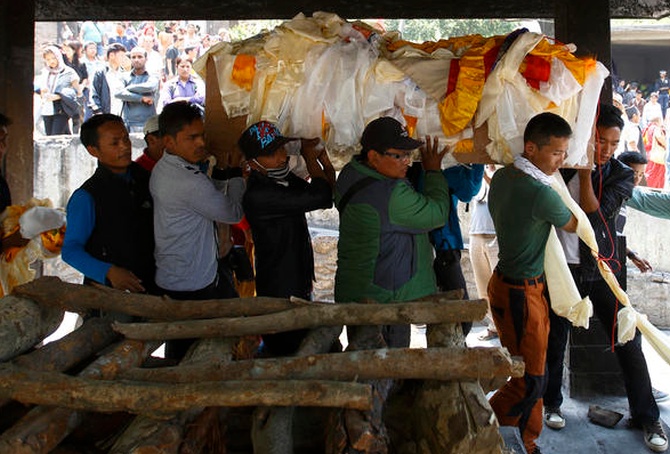
Mumbai-based Kuntal Joisher, who went from being a software engineer struggling with his weight to a mountaineering coach, says the best 20 minutes of his life were the ones he spent on top of Everest when he climbed from Nepal in 2016.
This, despite "traffic jam" conditions on the way to the top. Joisher, who identifies himself as an "ethical vegan", had remained meat- and dairy-free at the time.
A desire to prove that it was possible to summit while being vegan not only in diet but also in climbing gear, a first in the world, took him to the mountain's summit again this season, albeit from the rougher and more-regulated Tibetan side.
One thing he was conscious of, throughout his mission, was to save a crucial stock of strength for the way down. "Descending to safety -- that's when the actual expedition begins."







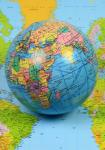




 © 2025
© 2025